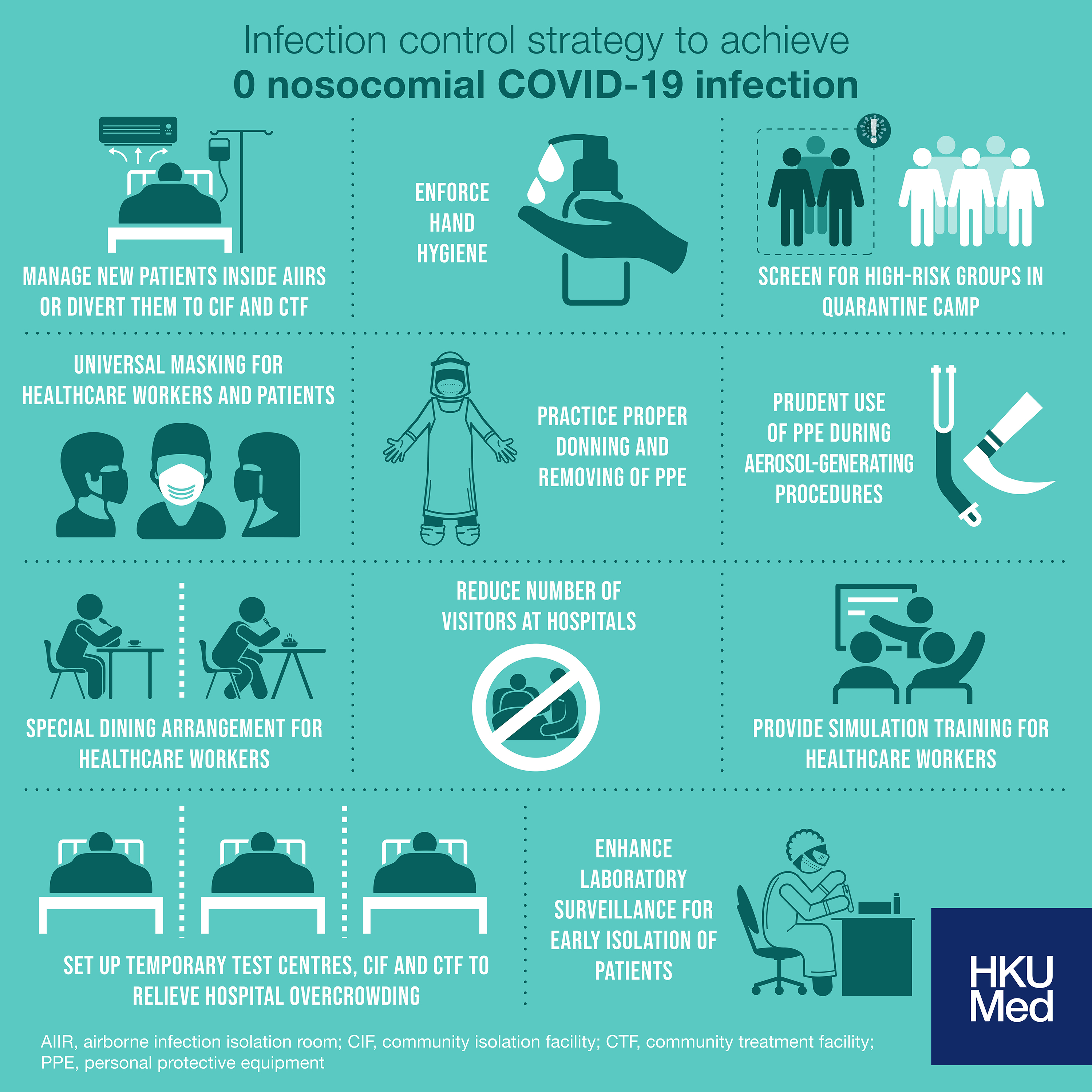Healthcare workers (HCWs) are ten times at risk of COVID-19 infection compared with the general population. Infection among HCWs can demoralise frontline staff and have a detrimental impact on the healthcare system. Therefore, to achieve zero nosocomial COVID-19 infection among HCWs, a multi-pronged infection control (IC) strategy was implemented to minimise its in Hong Kong.
Key summary of the strategy:
- Managing all newly diagnosed COVID-19 patients inside airborne infection isolation rooms (AIIRs) in hospitals or diverting them to community isolation facility (CIF) and community treatment facility (CTF).
- Enforcement of hand hygiene and regular cleaning of the environment.
- Enhancement of laboratory surveillance for early isolation of COVID-19 patients in AIIRs.
- Proactive screening for high-risk groups in quarantine camp.
- Setting up temporary test centres, CIF and CTF to relieve overcrowding in hospitals.
- Universal masking for HCWs and patients.
- Practicing proper donning and removing of personal protective equipment (PPE).
- Prudent use of PPE when performing aerosol-generating procedures.
- Special dining arrangement for HCWs in hospitals.
- Reducing the number of visitors at the hospitals.
- Educating IC measures and providing simulation training among HCWs. Each 3-hour training session includes a 45-minute lecture, scenario-based simulation practice, and a debrief.
The stringent multi-pronged IC strategy managed to prevent nosocomial SARS-CoV-2 infection among HCWs in the first 300 days despite an exposure of 78,834 COVID-19 patient days. With the emergence of mutant COVID-19 strains, such multi-pronged strategy becomes more important than ever.
To read the original article published in Infection Control & Hospital Epidemiology, click here.
